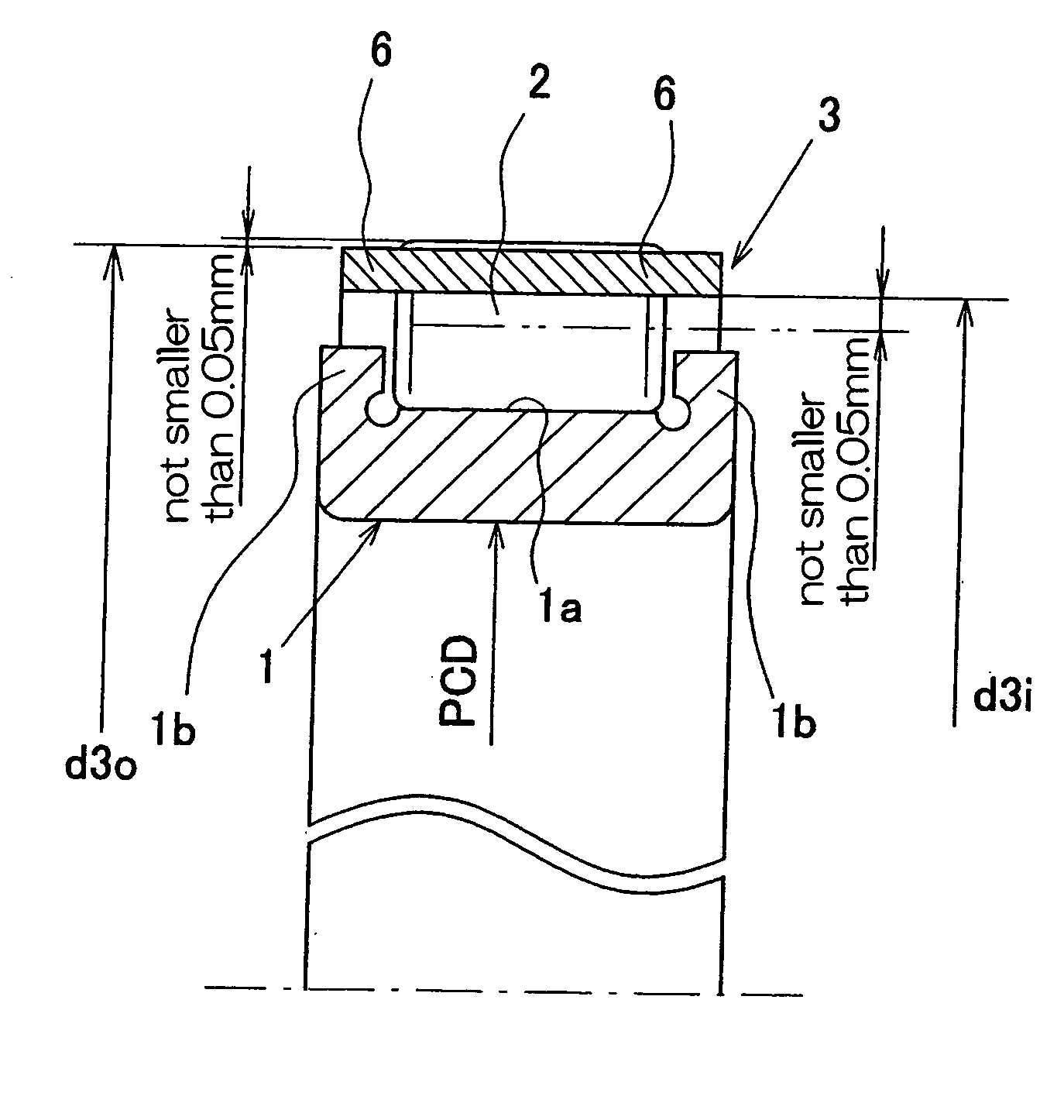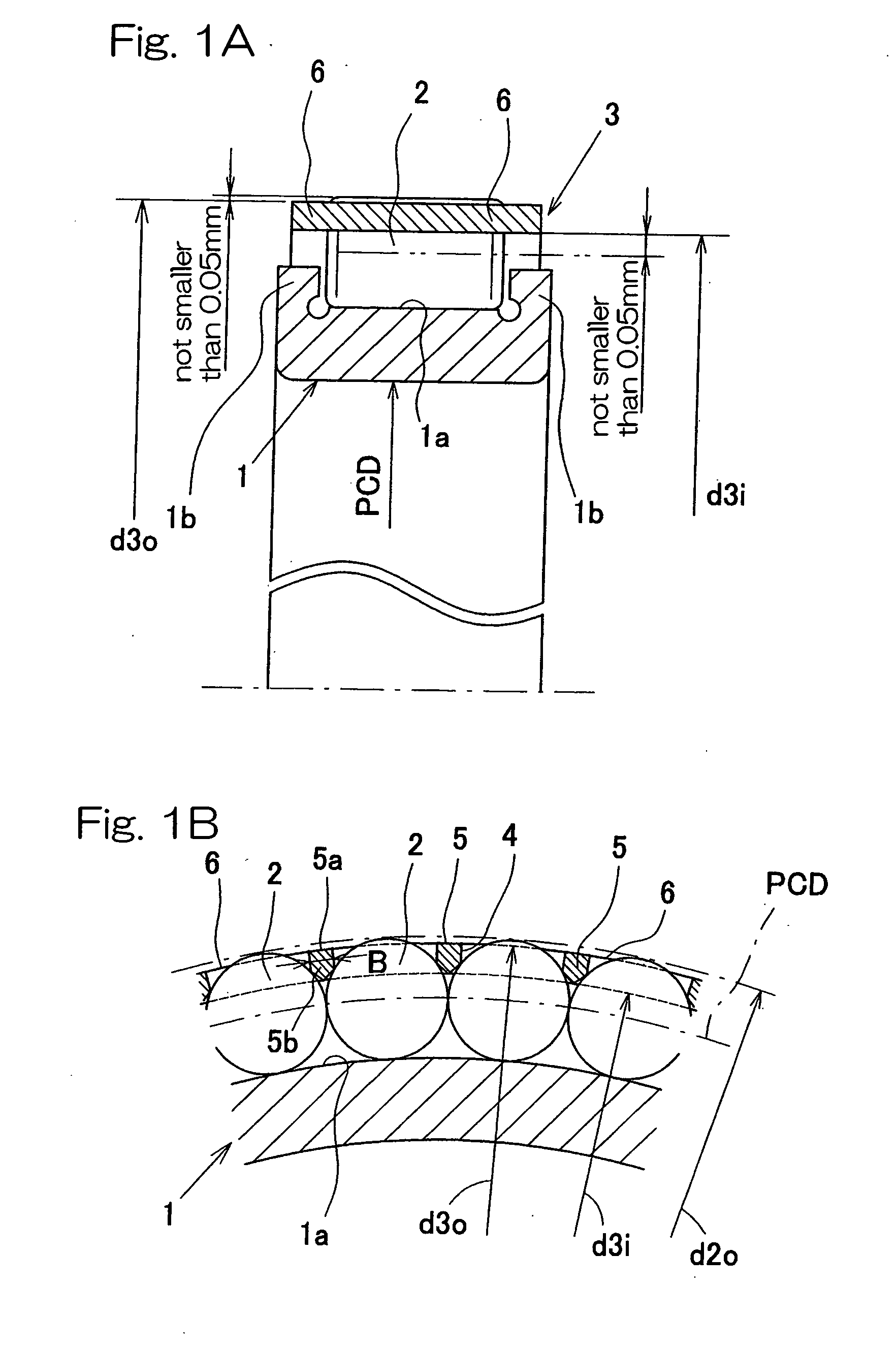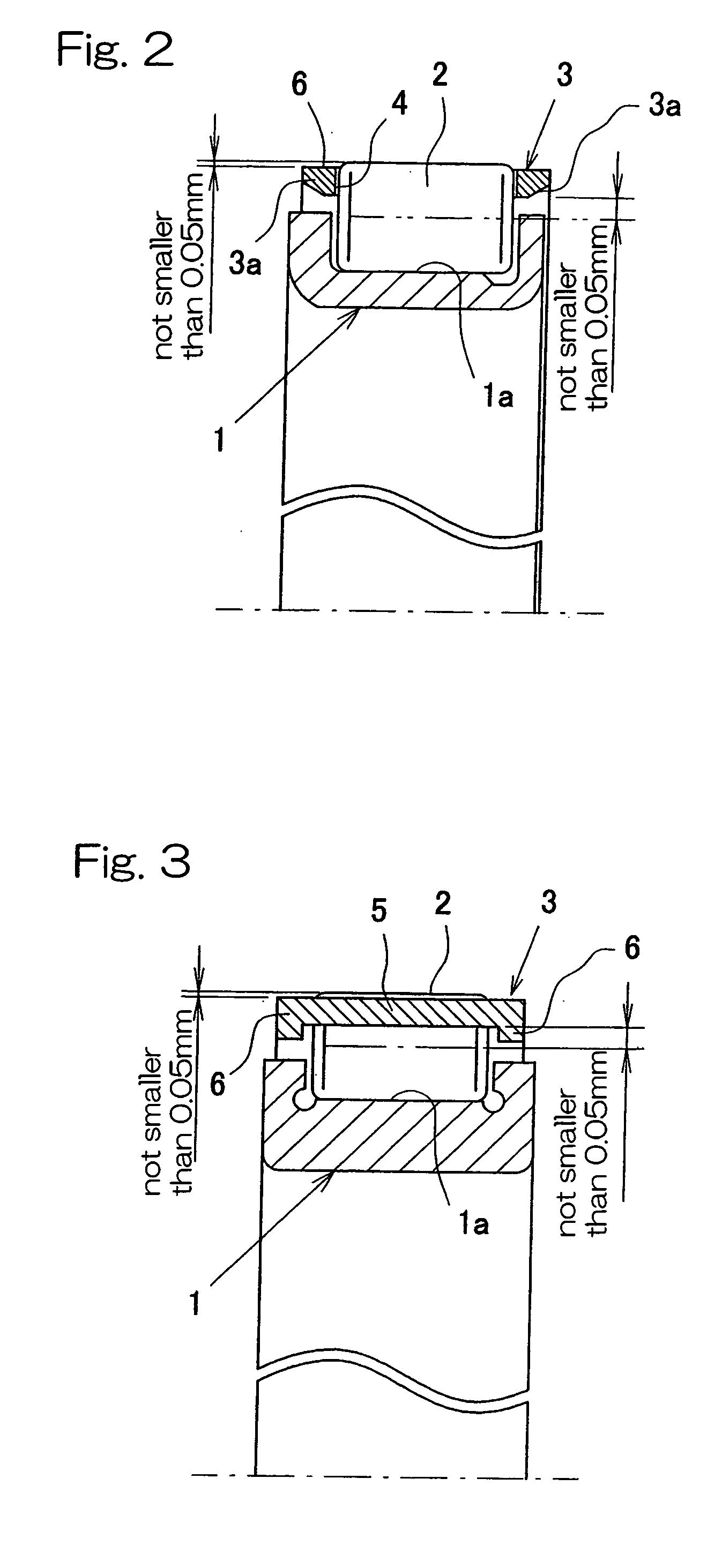Roller bearing
a roller bearing and roller end technology, applied in the direction of bearings, shafts and bearings, rotary machine parts, etc., can solve the problems of increasing the number of assembling steps, increasing the cost and environmental problems, and the frictional wear of the roller end face tends to be prominent, so as to facilitate the insertion of the roller, increase the assemblability, and maintain the effect of sufficient strength
- Summary
- Abstract
- Description
- Claims
- Application Information
AI Technical Summary
Benefits of technology
Problems solved by technology
Method used
Image
Examples
second embodiment
[0077]FIG. 2 illustrates the roller retainer 3 according to a second preferred embodiment of the present invention. In this second embodiment, the inner race 1 is of a drawn cup type, i.e., a press-worked product made of a steel plate. In addition, the roller retainer 3 has opposite end portions 3a of the inner peripheral surface thereof so shaped as to be inclined axially outwardly and upwardly.
[0078] Other structural features of the roller retainer 1 shown in FIG. 2 than those described above are substantially similar to those shown in and described in connection with the previous embodiment with reference to FIGS. 1A and 1B and, therefore, the details thereof are not reiterated for the sake of brevity.
[0079] According to the second embodiment shown in FIG. 2, by allowing the opposite end portions 3a of the inner peripheral surface of the roller retainer 3 to incline axially outwardly and upwardly, the roller retainer 3 can conveniently smoothly be inserted into the outside of th...
third embodiment
[0080]FIG. 3 illustrates the roller retainer 3 according to a third preferred embodiment of the present invention. According to this third embodiment, the inner race 1 is in the form of a machined product formed by machining a steel plate, and the roller retainer 3 is so shaped as to have its axially opposite ring parts 6 each having a thickness, as measured in a direction radially of the roller retainer 3, that is greater than that of each of the pillars 5. Other structural features of the roller retainer 1 shown in FIG. 3 than those described above are substantially similar to those shown in and described in connection with the previous embodiment with reference to FIGS. 1A and 1B and, therefore, the details thereof are not reiterated for the sake of brevity.
first embodiment
[0081] Even with this design, functions and effects similar to those afforded by the first embodiment shown in and described with reference to FIGS. 1A and 1B can be obtained.
[0082]FIGS. 4A to 4D and FIGS. 5A to 5C illustrates a fourth preferred embodiment of the present invention. Any of various forms of the roller retainer 3 according this fourth embodiment is particularly applicable to any one of the first to third embodiments of the present invention shown in and described with reference to FIGS. 1A and 1B, FIG. 2 and FIG. 3, respectively. As shown in FIGS. 4A to 4D, the roller retainer 3 employed in the roller bearing assembly according to any one of the first to third embodiments is formed with a plurality of axial slits 7, 7A at respective locations in a direction circumferentially thereof so as to extend from one end to a position adjacent the opposite end thereof. Except for the use of the axial slits 7, 7A, the roller retainer 3 is of the structure substantially identical ...
PUM
 Login to View More
Login to View More Abstract
Description
Claims
Application Information
 Login to View More
Login to View More - R&D
- Intellectual Property
- Life Sciences
- Materials
- Tech Scout
- Unparalleled Data Quality
- Higher Quality Content
- 60% Fewer Hallucinations
Browse by: Latest US Patents, China's latest patents, Technical Efficacy Thesaurus, Application Domain, Technology Topic, Popular Technical Reports.
© 2025 PatSnap. All rights reserved.Legal|Privacy policy|Modern Slavery Act Transparency Statement|Sitemap|About US| Contact US: help@patsnap.com



